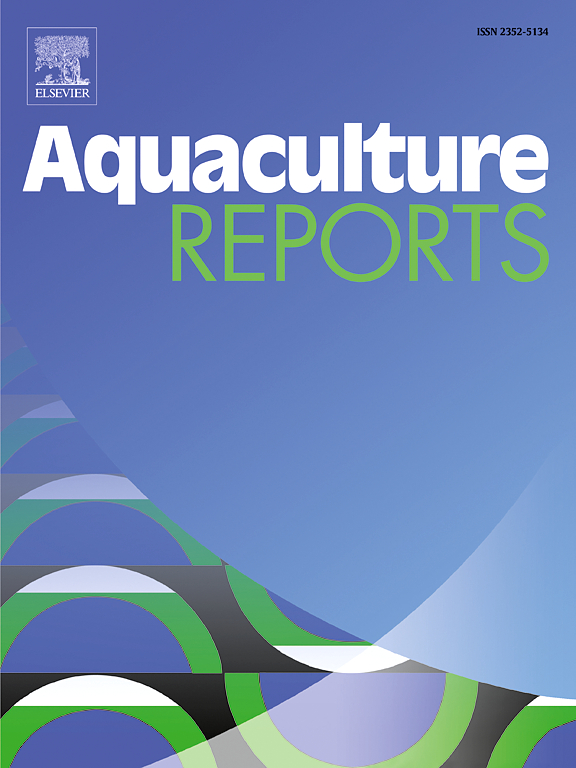Effects of different temperatures on sex differentiation and critical thermosensitive period of little yellow croaker (Larimichthys polyactis)
IF 3.2
2区 农林科学
Q1 FISHERIES
引用次数: 0
Abstract
This study aimed to determine the thermosensitive period and effect of temperature on sex differentiation in L. polyactis. The results showed that the male-biased sex ratio was 50.9, 57.8, and 97.9 % in the 18, 24, and 31℃ groups at 90 days post-fertilization (dpf), respectively. Additionally, eggs, larvae, or juvenile fish were transferred from untreated water to 18 and 31℃ every 6 – 9 days from 0 to 55 dpf to clarify the thermosensitive period. The results demonstrated that the critical thermosensitive period was 19 – 25 dpf and the male-biased ratio reached 77.8 %. Exposure to 31℃ resulted in 74.1 and 69.6 % male-biased ratios during the 25 – 31 and 31 – 37 dpf periods, respectively, after the critical thermosensitive period. Histological observations indicated that long-term exposure of juvenile fish to 31℃ induced oocytes and/or ovary degeneration, followed by sex reversal to the testis. This study demonstrates that the sex differentiation of L. polyactis is significantly affected by high temperatures during the thermosensitive period and provides basic information on the sex differentiation of L. polyactis. It also provides a theoretical foundation for the sex-controlled breeding of L. polyactis.
求助全文
约1分钟内获得全文
求助全文
来源期刊

Aquaculture Reports
Agricultural and Biological Sciences-Animal Science and Zoology
CiteScore
5.90
自引率
8.10%
发文量
469
审稿时长
77 days
期刊介绍:
Aquaculture Reports will publish original research papers and reviews documenting outstanding science with a regional context and focus, answering the need for high quality information on novel species, systems and regions in emerging areas of aquaculture research and development, such as integrated multi-trophic aquaculture, urban aquaculture, ornamental, unfed aquaculture, offshore aquaculture and others. Papers having industry research as priority and encompassing product development research or current industry practice are encouraged.
 求助内容:
求助内容: 应助结果提醒方式:
应助结果提醒方式:


